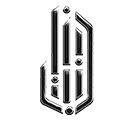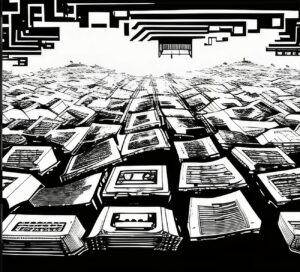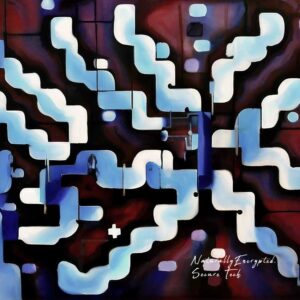“Tokens to NFTs”: How Blockchain Minting
Blockchain technology has first revolutionized the way we think about finance, and one of its coolest features is minting new units of cryptocurrency. While the process of minting is commonly associated with creating new units of cryptocurrency, blockchain technology can also be used to mint and manage other digital goodies, such as digital collectibles, NFTs, and even digital identities. Essentially, any type of digital asset that can be represented as a unique, digital record on a blockchain can be minted and managed using this technology.
The process of minting on the blockchain offers a range of benefits, such as democratizing ownership, preserving value of assets, and promoting innovation.
Democratizing Ownership
Minting on the blockchain is a transformative way to level the playing field and democratize ownership. It unlocks the potential for a broader swath of people to participate in the creation and management of digital assets, effectively breaking down the barriers erected by traditional financial systems and Web2 tech giants.
Unlike these centralized systems, where power and control are held tightly by a select few, blockchain networks are designed to operate in a decentralized manner. This means that the network’s operations are not subject to the whims of a single entity, but rather, are managed by a distributed network of participants. The beauty of this design is that anyone with an internet connection can take part in the minting and management of digital assets, opening up a world of possibilities for innovation and creativity.
By allowing more people to participate in the minting process, blockchain networks open doors to a more democratic era of ownership. This is made possible by the unique nature of digital assets, where ownership is tied to the control of private keys, rather than being monopolized by a central authority.
As a result, anyone who possesses the private keys to their digital assets holds the power to access and manage those assets, without the need for approval from a central entity. This shift in ownership structure is a welcome departure from the conventional, centralized systems that have dominated our society for far too long. By putting control back in the hands of the people, blockchain networks are paving the way for a more equitable and inclusive future.
Preserving Value
The beauty of blockchain technology lies in its ability to create a safe haven for the records of ownership and transactions. Every transaction that takes place on the blockchain is verified by a vast network of computers, ensuring that the data is not tampered with and that fraudulent activity is quickly detected and neutralized.
This level of security and transparency means that digital assets created through minting on the blockchain can be tracked back to their point of origin, giving rise to a clear and unambiguous transaction history. This level of transparency not only reduces the likelihood of fraudulent activity, but also provides a sense of security and trust for all stakeholders involved in the asset exchange. By minting a representation of a specific asset, the asset can be verified and authenticated as a unique and original item, which helps preserve its value over time.
Fostering Innovation
With blockchain technology, individuals and organizations can delve into new frontiers of creativity by minting assets that were once impossible or challenging to produce. One such example is the emergence of NFTs, which enable the creation of distinctive and authentic digital assets, including art, music, and collectibles. Prior to blockchain, such assets were difficult to produce and verify, but now they can be verified and authenticated with ease, paving the way for an exciting new era of creative expression and innovation.
Minting blockchain assets unleashes boundless opportunities for groundbreaking transactions and innovative business models. With blockchain’s unique ability to enable secure and transparent transactions sans intermediaries, it unlocks a world of potential for peer-to-peer exchanges and decentralized marketplaces. In turn, this opens up a whole new realm of previously unimaginable business models, including peer-to-peer lending, crowdfunding, and decentralized autonomous organizations (DAOs). The blockchain revolutionizes traditional notions of commerce and paves the way for an exciting new era of decentralized and community-driven economic systems.
Final Thoughts
Minting on the blockchain unlocks transformative benefits that democratize ownership, preserve value, and spark innovation. The distinct properties of digital assets allow for private key control, returning power to the people and leading to a more egalitarian ownership era.
The blockchain’s transparency and security, made possible by its widespread network of computers, ensures digital assets can be tracked to their origin, reducing fraud and instilling trust in asset exchanges. Minting blockchain assets unlocks endless opportunities for innovative transactions and business models, propelling us into a new era of community-driven, decentralized economic systems.
The blockchain is poised to revolutionize traditional commerce and has the potential to transform society in many ways.






